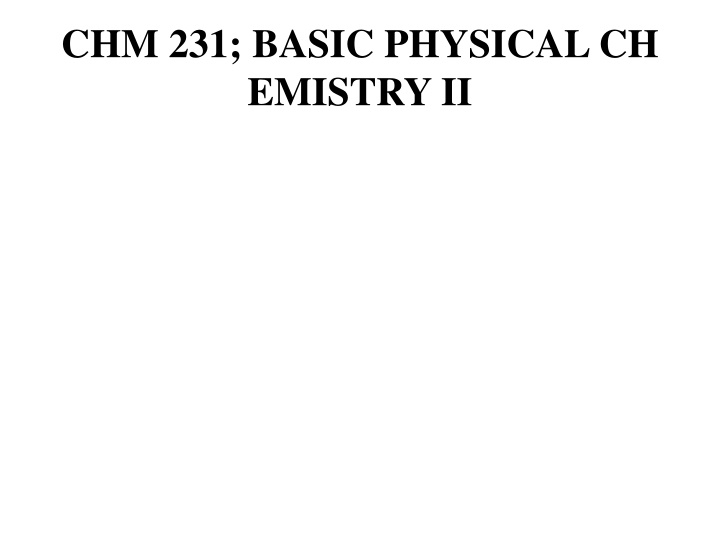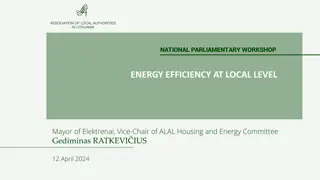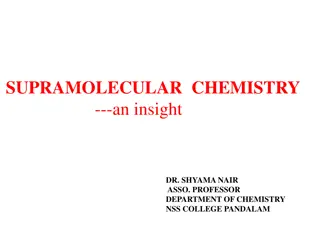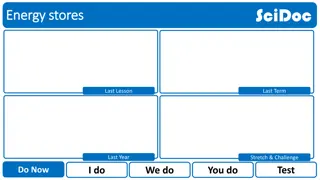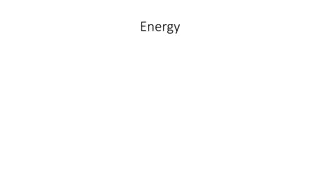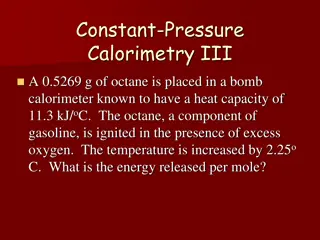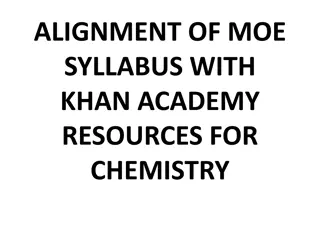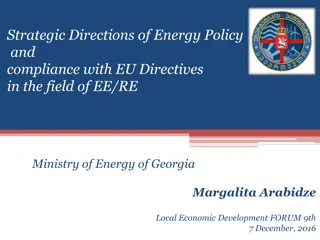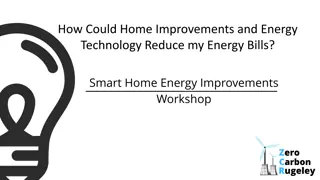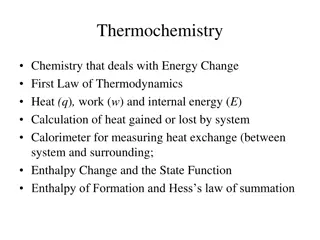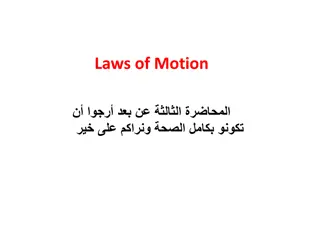Basic Physical Chemistry II: Energy Changes & Laws
Chemical thermodynamics encompasses the study of energy changes in both chemical and physical processes, governed by specific laws and relationships. The concept delves into isolating matter from the universe to observe thermodynamic properties, emphasizing the system's state determination and defining processes between different states. It explores state functions, system sizes, and properties that remain constant irrespective of quantity changes. Understanding such concepts is crucial for grasping the fundamental principles of chemical thermodynamics.
Uploaded on Mar 09, 2025 | 0 Views
Download Presentation

Please find below an Image/Link to download the presentation.
The content on the website is provided AS IS for your information and personal use only. It may not be sold, licensed, or shared on other websites without obtaining consent from the author.If you encounter any issues during the download, it is possible that the publisher has removed the file from their server.
You are allowed to download the files provided on this website for personal or commercial use, subject to the condition that they are used lawfully. All files are the property of their respective owners.
The content on the website is provided AS IS for your information and personal use only. It may not be sold, licensed, or shared on other websites without obtaining consent from the author.
E N D
Presentation Transcript
CHM 231; BASIC PHYSICAL CH EMISTRY II
CHEMICAL THERMODYNAMICS
of energy changes in chemical and physical processes and of the laws and relationships which govern them. Some terms are commonly used:
thermodynamics is defined as collection of matter i.e that part of the universe under study. The rest of the universe of course being isolated.
could be isolated from its surrounding i.e its completely insulated such that no heat flow exists between the system and its surrounding.
State of a system: The state of a system is specified by determining all its properties such as pressure, volume etc.
Process: A process is a change from one state A to another state B.
function x ( not necessarily a state function) is termed a perfect differential if it can be integrated between two states to give a value XAB= (A < x < B) dx which is independent of the path from A to B. If this holds, X must be a state function. Kinetic energy , Internal energy are state functions.
size of system taken i.e the properties will be the same whether small or great amount of the system is considered. E.g temperature, pressure, density, refractive index ,etc.
proportional to size of the system. Increase in size of the system obviously will increase this property , e.g, heat capacity, mass, volume, enthalpy, and entropy.
different formulations that can be shown to be equivalent. The zeroth law states that if two systems are each in thermal equilibrium with a third system, then they are in thermal equilibrium with each other.
process the difference of the heat Q supplied to to the system and the work W done by the system equal the change in internal energy, U.
A chemist is often faced with the task of determining whether a particular process will occur under specified conditions, and if it does occur
System, surroundings, state of system, change of system.
What do you understand by the term internal energy and enthalpy of a system? How are they related?
pressure are expanded isothermally against a constant pressure of 1 atm until the pressure of the gas is also 1 atm, assuming ideal behaviour. What are the values of W, u, H and q?
infinitesimally less than the gas pressure of 0.1 atm, the temperature being kept constant at 0oC. (a) How much work is done by the gas (b) What is the change in u and H. (c) How much heat is absorbed?
